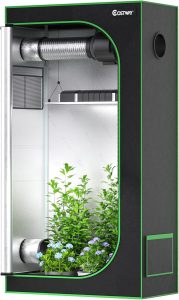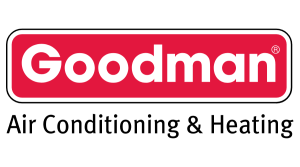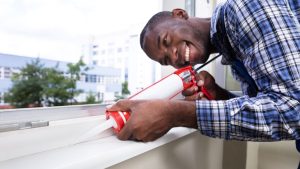Connecting Grow Tent To HVAC System
Efficient Climate Management for Your Indoor Garden
To successfully grow vegetables, flowers, or any specialty plants indoors, one will need to create a conducive setting for the plants. Grow tents make it possible for the user to regulate the light, warmth and humidity ideal for the growth of plants. But maintaining an even climate can be difficult and take a lot of time unless one has the appropriate equipment. Connecting an HVAC system to the grow tent is the most appropriate answer to this question. Proper integration helps achieve controlled biosystems, enabling you to grow healthy plants regardless of the season.
At Summers Comfort Heating & Air, we specialize in tuning HVAC systems, even for indoor gardens. Here’s the procedure for connecting your grow tent to your HVAC system.
Why Do It: Grow Tent and HVAC System Integration
For any room garden, certain factors that are temperature, humidity, and adequate ventilation of air are really important. Most of the plants grow at a temperature of around 70-85°F during the day and suffer cooler temperatures at night. One of the other aspects that need to be maintained is humidity, which is usually between 40-60%, depending on the type as well as the growth phase of the plants.
HVAC systems provide several benefits when used with a grow tent:
- Temperature Control: Maintain the grow tent’s temperature as needed.
- Humidity Management: HVAC systems control humidity levels to prevent mold and mildew.
- Improved Air Circulation: Ventilation purifies the air and supplies CO2.
Thus, connecting your grow tent to your HVAC system ensures a balanced growing environment.
How to Connect Your Grow Tent to Your HVAC System
1. Assess Your HVAC System
First, check if your HVAC system can handle the additional load from the grow tent. Indoor growing creates extra heat and humidity, so modifications may be necessary. You may need to add vents or upgrade your current system.
Key factors to evaluate:
- Capacity: Ensure your system can maintain temperature and humidity with the increased load.
- Ductwork: Verify that your ducts regulate airflow between the grow tent and the rest of the house.
- Thermostat: A simple device, such as a smart thermostat, makes it easier to manage settings, for example for the grow tent.
At Summers Comfort Heating & Air, we can assess your HVAC system to determine if it can handle the added demand or if upgrades are needed.
2. Strategy for Ventilation Systems
Too much heat or humidity can damage your plants, and improper CO2 levels can hinder growth. Creating intake and exhaust air pathways for your grow tent is crucial. This requires proper ducting.
Here are the requirements:
- Intake Duct: Supplies the grow tent with cool air from the HVAC system. A filter can keep out insects, pollen, and dust.
- Exhaust Duct: Channels hot air from the grow tent to the HVAC’s return air system, preventing heat buildup.
Summers Comfort Heating & Air specializes in installing air duct systems, ensuring proper airflow and ventilation for your grow tent.
3. Regulate Temperature and Humidity
In a grow tent, excess heat or humidity can harm plants. Your HVAC system helps control temperature, but you may need additional moisture control equipment. Vegetative growth requires higher humidity, while flowering needs less.
Important points to consider:
- Humidifiers/Dehumidifiers: Depending on your climate, a humidifier or dehumidifier may be helpful. These devices can be external or incorporated into the HVAC system.
- Temperature and Humidity Monitors: Install sensors inside the grow tent to interface with the HVAC control system for automatic operations.
Summers Comfort Heating & Air can install dehumidifiers or humidifiers to the grow tent for effective moisture control.
4. Control Lighting Heat
Grow lights generate heat, raising the temperature in the tent. While your HVAC system helps, additional measures can reduce heat from the lights.
Here are some solutions:
- Air-Cooled Reflectors: If using HID grow lights, air-cooled reflectors can vent hot air from the lights.
- Light Height: Ensure the grow lights are at the correct height to prevent overheating, while the HVAC system maintains the overall environment.
Our experts at Summers Comfort Heating & Air can advise you on managing heat from grow lights.
5. Proper Insulation and Sealing
Proper insulation and sealing are critical for maintaining temperature stability and energy efficiency. Check for leaks in your grow tent, and insulate the ductwork leading to and from the HVAC system.
6. A Split-System HVAC for Maximum Control
For serious growers, a dedicated mini-split HVAC system may be the best choice. These systems allow independent temperature and humidity control for different zones, including your grow tent.
Mini-split systems offer:
- Zoned Control: Control the climate in your grow tent independently of the rest of the house.
- Energy Efficiency: Prevent overburdening your main HVAC system by isolating the grow tent.
- Dehumidification: Some mini-split systems come with built-in dehumidifiers to control moisture levels in the tent.
Summers Comfort Heating & Air can install mini-split HVAC systems for optimal climate control in your grow tent.
Key Takeaways
- Consistency is Key: Connecting your grow tent to your HVAC system ensures the right environment for your plants.
- Ventilation Matters: Proper intake and exhaust ducts are essential for regulating temperature and airflow.
- Humidity Control is Crucial: Use dehumidifiers or humidifiers to manage moisture levels.
- Monitor Closely: Use smart thermostats or sensors to track temperature and humidity, making adjustments as needed.
By following these tips, you can create the perfect conditions for indoor gardening. If you’re unsure about your HVAC system’s capacity or need assistance connecting it to your grow tent, Summers Comfort Heating & Air is here to help.
Ready to work with the pros? Contact Summers Comfort Heating & Air today for expert advice on controlling the climate in your grow tent!




